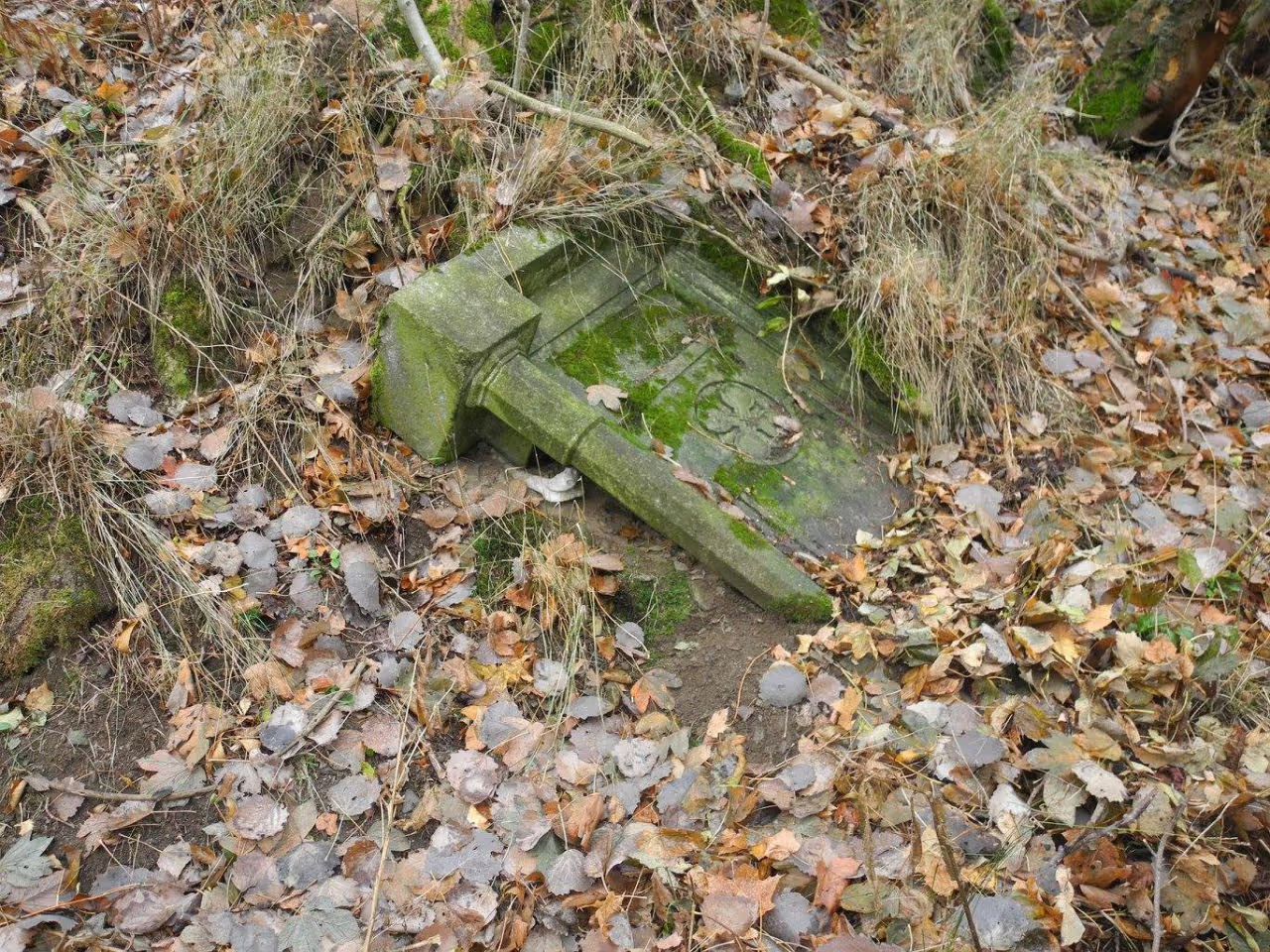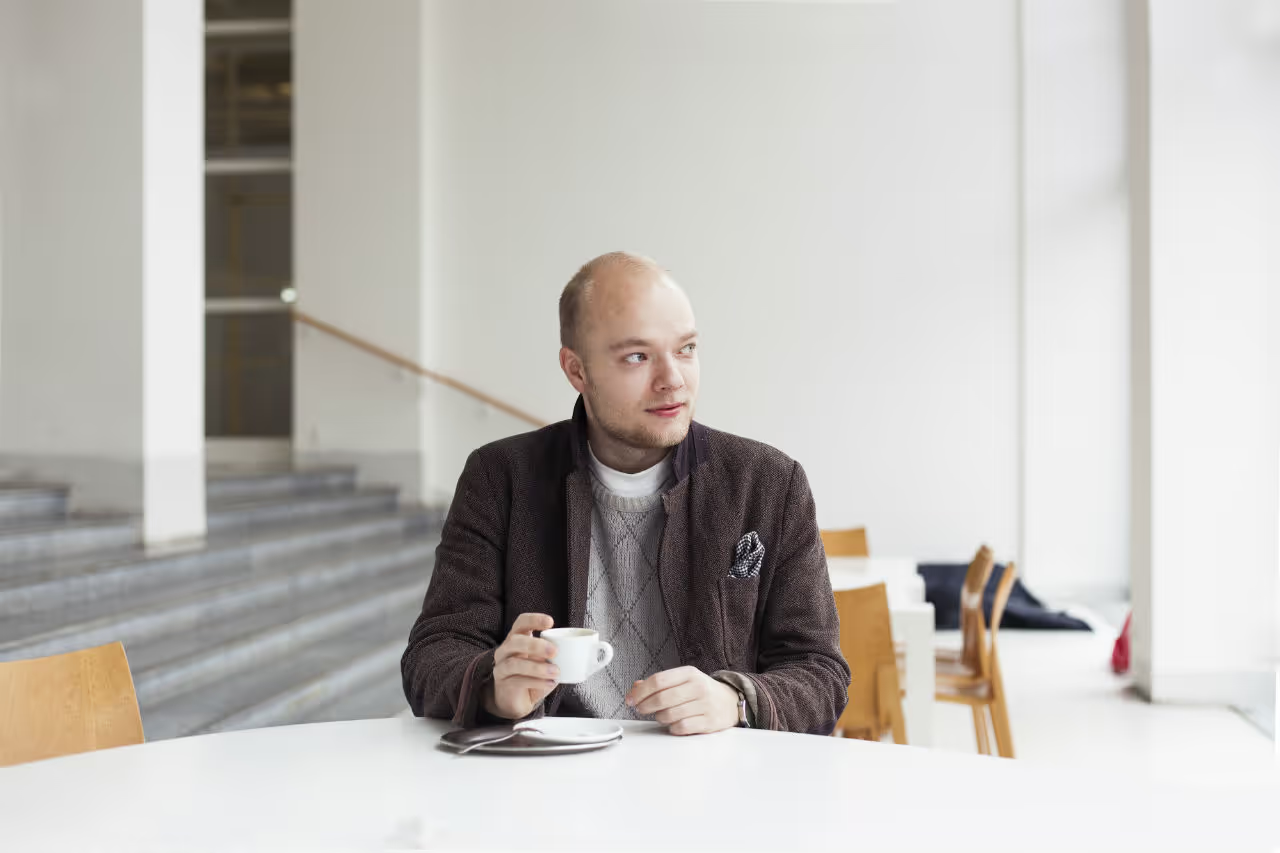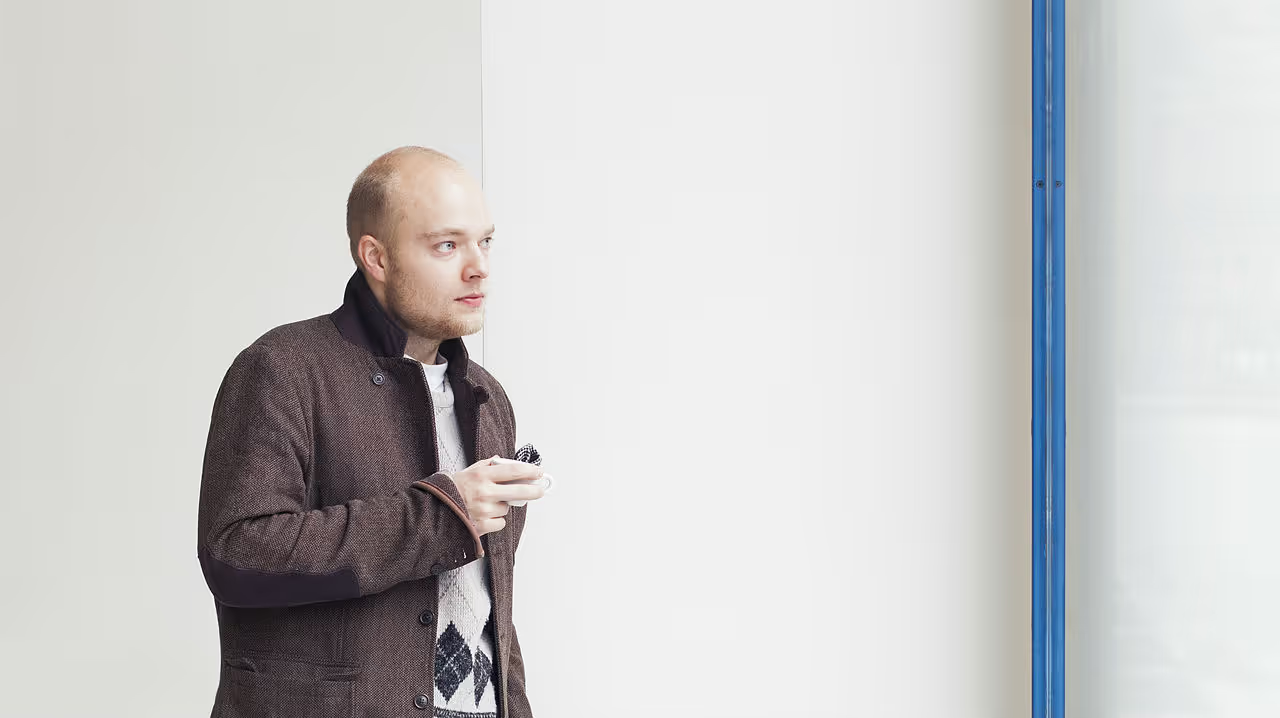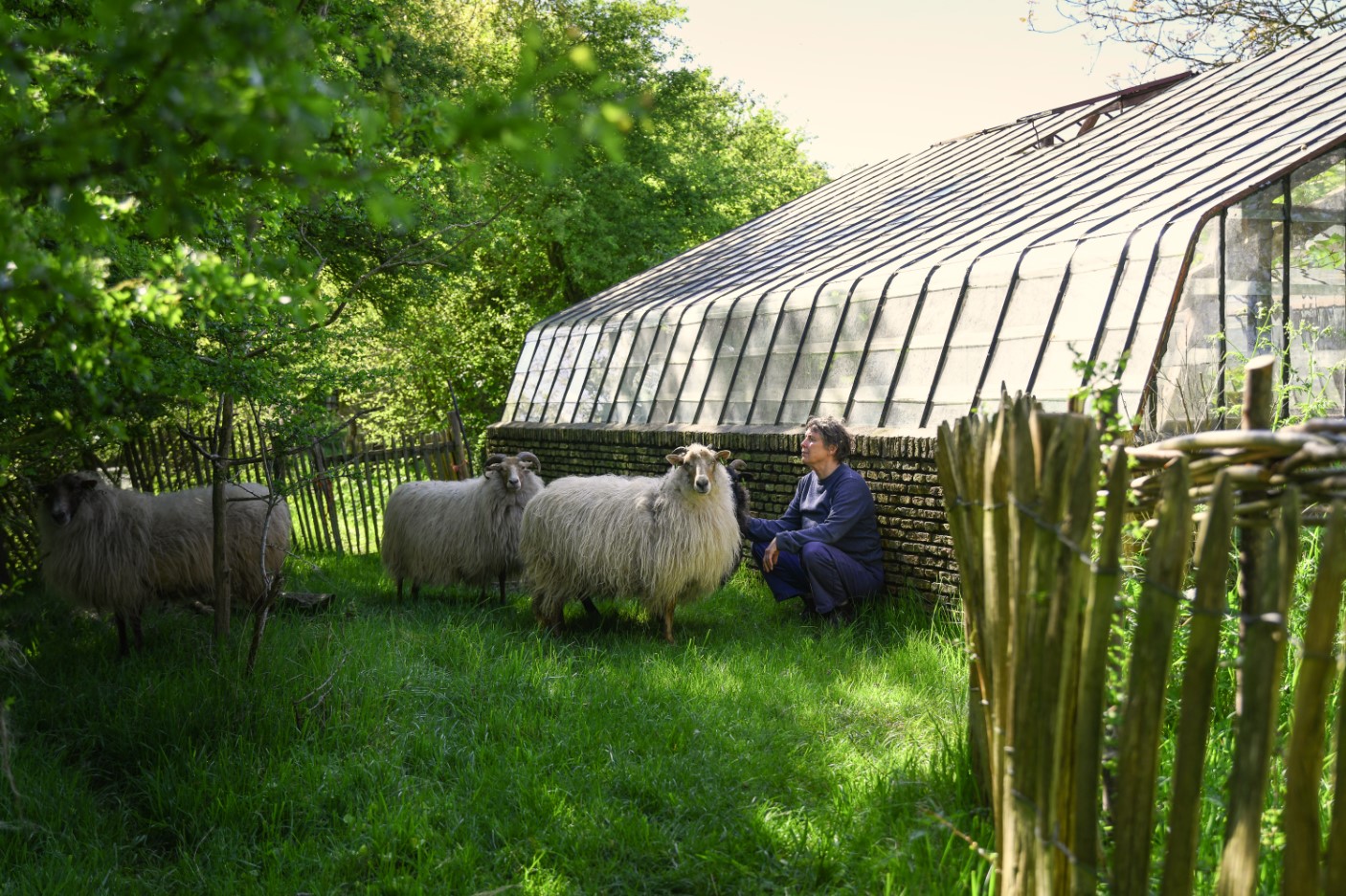► českou verzi článku najdete zde
Yet Jan Lebl, a Prague´s native, feels attracted to the place which encourages him to act. Formerly a mere enthusiast and activist, he became, in the fall of 2015, a member of the local Council. Jan Lebl has also been an active member of Švihák (a Dandy), an NGO dedicated to reviving public space in Marienbad, organizing festivals, bicycle rides, workshops, and Pecha Kucha evenings.
Three years ago you founded an NGO called Obnova obce Prameny (Restoration of Prameny) – what made you do it and why did you pick Prameny?
It was not me, who picked Prameny. Just the opposite, I´m the one who was picked by the place. My grandparents had bought a house there. We used to spend most weekends and holidays there and, already as a child, I became addicted to the place – my relationship to Prameny may be deeper than that of most locals. Gradually, I was becoming an activist. Five years ago, I opened a small museum in our house documenting the history of the village. We welcome both tourists and locals. Over time, I developed other activities around the village. I walked around to discover and, partly with the help of the local people, restored wayside crosses and cavalries. I felt the urge to launch something more official. And so we started the Restoration of Prameny, a civic association.
What are your priorities?
In Prameny, you find problems everywhere, you could work there a hundred years and still there would be more work to do left. At the beginning, we were looking for something typical for the community and unique in the town´s history. The spa was founded at the end of the nineteenth century. After the war, it deteriorated gradually to disappear entirely at the turn of the 21st century. But Rudolf and Gisela, the local mineral springs, have remained there. They were completely covered with vegetation, it was a dirty place, a kind of a forest landfill, which we had to clean, step by step, to make them at least accessible. Today, the springs are there for anyone who wishes to come, relax and have a sip of our healing source.
Do people actually come there?
Yes, they do and it does make me happy. Still, you get more tourists there than locals. Even though the mineral springs are some three hundred meters beyond the municipal limits, the locals hardly ever go there. Some people even complained, that we should have done something in the centre of the village.
What else did you do?
We reconstructed a statue of St. Jan Nepomucký, which is close to the village square. We planted trees as part of that project, too. We also started reconstructing a forest chapel, yet another project outside the village.
Prameny is heavily indebted – why is that?
In the nineties, the municipality had plans to open a facility to bottle mineral water here. The local Council had an awful lot of wells drilled to draw water from. The planning was rather strange. First, the Council had paid for the wells and only then it started looking for an investor, who was never found. Now, the town in heavily indebted and the investment turned out useless. We have no assets left and cannot do anything. A Russian investor is now trying to buy up all the claims to get title to all the land. For that reason, I want to introduce at least some rules to this development. We need a strong community to prevent uncontrolled construction or sprawl - God knows what this investor is up to.

Augustin, the prior of the Teplá monastery giving a blessing at the occasion of the second symbolic spa season opening in May 2014.
In May, your association organised, for the third time already, an opening of the spa season – how did it go?
The spa opening is our key project of the year. The Mineral Springs Opening for the season takes place at the Rudolf a Gisela springs, the former spa park. We invited the prior from the Teplá monastery to give a blessing and people mingled for some two hours, tasted the springs, ate kolaches and enjoyed music. The opening is meant as an informal gathering attended by both locals, friends and supporters from elsewhere. This year, the mayor of Prameny attended for the first time, too. We spoke about our achievements from the past year and about our plans for the future. The opening is a great platform to exchange views, plan, and show that things are moving in the right direction.
You mentioned the mayor – is it true that she filed a criminal complaint pointing out that you were cleaning the former cemetery? What is it all about?
I´m somehow afraid of topics, which affect the local people directly. It's very sensitive. Thus I seek places which concern them but do not impact them directly. Take this cemetery… One has to realize that even though current Prameny has some one hundred inhabitants only, before the World War II, this was a town of two thousand people and the aforementioned cemetery is a good proof of that. In the fifties, the authorities had it demolished by bulldozers and took most tombstones away for sale. Those left grew into grass and bushes and the cemetery turned into a rundown place with scattered remains of tombstones all over the site. It is absolutely disgraceful that somebody had ruined a place commemorating hundreds of deceased German citizens, who had, for many years, lived and worked here to develop this town and its surroundings.
So the cemetery is no longer in use?
No, it is not. It´s a rundown site lot covered with bushes, seriously, it cannot be used to bury people. We bury our deceased in Marienbad or in other villages, some quite far away from here.
What did you do at the cemetery?
My friend, a conservator of historical monuments, and I decided to mow the grass there and while doing that, I felt an urge to do more. Without much planning, I started cleaning a tomb, which was full of dirt and debris. I know that I should have consulted it with other people, experts, and set a clear objective of this action. But I felt that the tomb should be cleaned and used to deposit remains of bodies found in the area in the course of the reconstruction works. But the response was quite negative.
Why was that?
I was accused of digging out graves, mistreating the remains, and engaging in illegal archaeological research. By law, any time you dig anything, you have to invite an archaeologist over. I did not know that and it caused some trouble, it was by no means intentional.. I regret that. The Police are not investigating it – from my statement they gathered that I did not intend desecrate graves or steal from them.

Three newly erected tombstones and a wooden cross bearing a sentence: “Let envy, hatred and prosecution end here“. This sentence in German used to decorate one of the pillars of the cemetery gate. In 2011, Jan Lebl placed the cross to the site of the former cemetery.

A torso of a tombstone from the old cemetery.
This past summer, you organised a workshop of architecture students at Krásno, a village about ten kilometres from Prameny. How did it go? Did you manage to establish rapport with the locals?
In Krásno, I tested the limits of communication with the local people to the maximum. First, we created a map to which the locals posted stickers to places they like or dislike. We had fifteen architecture students from all over the country there, whom we divided to groups and had them work on five projects to revitalize the village centre. To conclude with, we invited the locals to come over and debate the projects with the students. About sixty people accepted the invitation and came to an old preschool where we presented the projects. The locals walked around and talked to the students. It looked like an open air market and the atmosphere was absolutely great! Subsequently, we analysed all the projects, presented them to the public, had them evaluated by an expert jury and, finally, exhibited them at the local council building – for two months. The future of the projects is now in the hands of the City Council members who initiated the activity workshop.
Are you planning something similar in Prameny, too?
Yes, we are. In the middle of December, our Council adopted a resolution to organise a similar event in Prameny. Students will come in summer to stay and think about the future direction of Prameny. Subsequently, we can work on some projects. I know that students are not as capable as the experienced practitioners, but they are willing to work hard for little money. In my opinion, it is better to have five projects designed by architecture students, which we can easily afford, than waiting for years to save money to pay for a renowned architect. It is good to see more potential directions to take and select the best one, which we can take further and turn it into something doable.
You are a student of architecture, too… Why don´t you work on it yourself?
I´m afraid it can turn against me. If it turns against some students from Prague, they will go back home one day and so what… (Laughter)

Do you have an idea of what the locals actually see as ideal?
They are not happy, but very few of them have an idea of what could and should be done to get the things moving. For decades, they´ve been walking past the bushes growing around the formerly lively square and now they can´t imagine that houses would be built there one day. Their opinion or architecture and architects is quite low. Villages or small towns usually hire a cheap construction company to refurbish their square or centre. They all look the same – concrete pavements and no context. Architecture is often perceived as something extra – only rich people would hire an architect, others can do with a civil engineer. Indeed, civil engineers can do a lot, but their training is different from ours.
Is there a place where you draw inspiration from? Do you have a picture in your head of Prameny in the future?
I like Swiss architecture, their villages and little towns. In Switzerland and Austria, you have local architects and villages are proud of their high quality architecture and public space. Moreover, there are communities of people there, who care about public space, its development, and future. I think, however, that there is a long journey ahead of Prameny.
How does it look like now?
If you come to Prameny just for a while or you just drive through, you see a village which is really ugly. The church is gone, the rundown square is covered with bushes, some houses have been refurbished, some not. There are many empty sites there, obviously there used to be houses there, but they are gone and nobody cares about the sites now. It is all a bit desperate. It´s been a great challenge for me to find a solution to all this, to return Prameny back to life and make it into a place which will keep developing in the future. Prameny will need experts to reach that goal, the locals can´t do it just on their own.
Have the locals themselves tried to move it forward?
I have seen some efforts to improve Prameny and to initiate activities in the public space. But I see it rather negatively, it lacks concept and planning and some of these things are quite stupid.
What exactly?
Take the rundown square – there is a small rock garden in the middle of it surrounding some pole. One of the locals bought and placed several kitschy bird feeders there and some others are starting a pond. It is great that people want to be active, but at the same time, it has to have a kind of concept, a direction to take, priorities. It is hard to just say – you’ll do this and you’ll do that because we have an architect who says so.
What would you personally like to do in the future?
In the near future, I envisage reconstruction of the cemetery, the square, construction of a chapel on the site of the former church or at least some indication of the church´s foundations. Prameny also need to boost everyday life – pavements, public lights, a playground. One can be creative around that… On the other hand, there is no neutral place there for people to meet.
What about a pub?
There are pubs there, but they have their owners and these owners are friends with some people only. The local Council is divided into two belligerent groups which cannot meet somewhere neutral. It would be ideal to create a municipal house. There is a suitable house for sale there and all we need to do is to say OK, let´s go for it, buy it through the association and refurbish it.
How do you want to make people more attached to the place?
We need to do things together, plant these, for example. You plant a tree and it is your three… you won’t say that this is a tree planted by some strangers and why would it care about it. People would become aware of the work and time invested. And when the tree needs watering, one would say: “Hey, this tree is thirsty, why don´t I water it once I had planted it…”
So why doesn’t it work like this in Prameny?
The former Sudetenland is simply like that and some people still don´t call it home. When you ask them about their home town, they will tell you about the place they came from some forty years ago. It is very much linked to the cemetery and burials – the place where your ancestors are buried will always remain somehow special for you.

In the past semester, the Czech Technical University’s Department of Architecture, the studio of Miroslav Cikán, worked on a project for Prášily, a Šumava village similar in size to Prameny. For quite a while, Miroslav Cikán has been promoting here Swiss architects, such as Zumthor or Caminada. What did you learn from this studio experience? Do you think that some of the lessons learned can be used in Prameny?
I really enjoyed the Prášily project. I´d love to convince a studio leader or a teacher from our department to take Prameny on board. In Prášily, it was a great teamwork, some people dealt with urban planning, some others concentrated on individual houses. Together, we created a picture of Prášily in the future, including the most important buildings – the town hall, a chapel, brewery, school … For example, I was in charge of the town hall and the municipal house. We presented our works in Prášily.
How come that things work relatively well in Prášily, which it´s been such a fight in Prameny?
The mayor of Prášily is a great guy. He communicates, supports the local architect Ivan Adam and the two of them are so strong that they managed to attract interesting people. But even Mr. Adam has had issues with the locals who sometimes don´t understand and oppose his visions (editor´s note: In autumn, the Czech TV aired Prášení, a documentary in which Ivan Adam, the local architect, speaks on the issue of uncontrolled sprawl of some Šumava locations.)
Do you feel different about Prameny now, one you became a Council member there?
Becoming a Council member gave me more energy - the locals expressed their support of my ideas. They used to perceive me as a person, who says: “Look, I want to be active here, maybe you don´t go for it, but I do, so your fault…”. It is different now. They´ve said – we want it… When my friends from Le.hnutí visited Prameny some time ago, you could tell that they were rather disappointed at first: “Is this Prameny you´ve told us so much about …?“ But after having walked around a bit and getting to know the place better, they gathered what attracts me to this place. They were leaving full of enthusiasm, their heads overflowing with plans for the future. It makes me happy that Prameny has the spirit to attract people who seemingly have to attachment to this place.




%20(2)%20kopie.jpg)